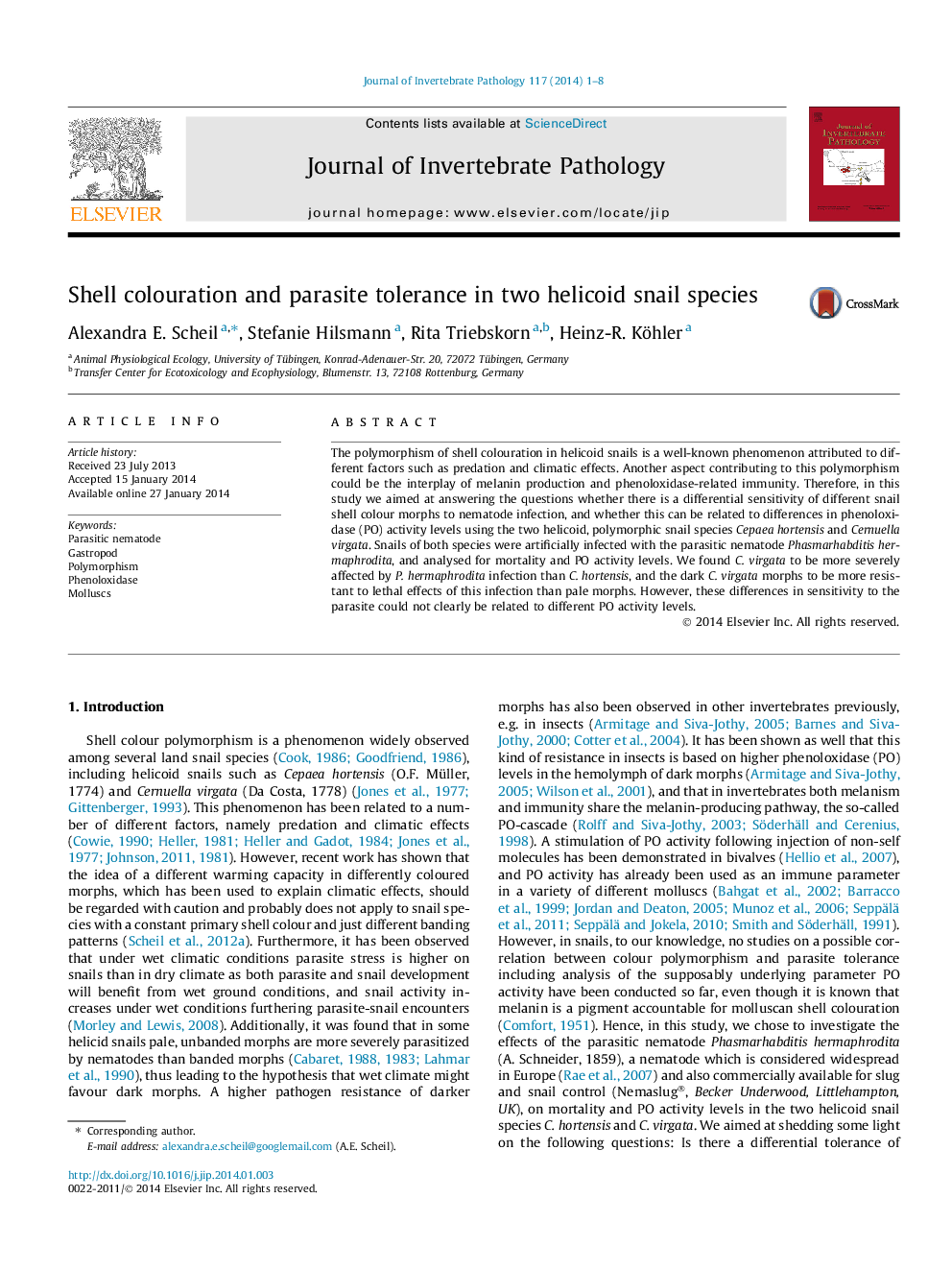| Article ID | Journal | Published Year | Pages | File Type |
|---|---|---|---|---|
| 4557795 | Journal of Invertebrate Pathology | 2014 | 8 Pages |
•C. hortensis is relatively tolerant to P. hermaphrodita infection.•Dark C. virgata morphs are less affected by nematode infection than pale morphs.•This is a novel hint to one possible selective advantage of dark morphs.•However, it is not related to differences in phenoloxidase activity levels.
The polymorphism of shell colouration in helicoid snails is a well-known phenomenon attributed to different factors such as predation and climatic effects. Another aspect contributing to this polymorphism could be the interplay of melanin production and phenoloxidase-related immunity. Therefore, in this study we aimed at answering the questions whether there is a differential sensitivity of different snail shell colour morphs to nematode infection, and whether this can be related to differences in phenoloxidase (PO) activity levels using the two helicoid, polymorphic snail species Cepaea hortensis and Cernuella virgata. Snails of both species were artificially infected with the parasitic nematode Phasmarhabditis hermaphrodita, and analysed for mortality and PO activity levels. We found C. virgata to be more severely affected by P. hermaphrodita infection than C. hortensis, and the dark C. virgata morphs to be more resistant to lethal effects of this infection than pale morphs. However, these differences in sensitivity to the parasite could not clearly be related to different PO activity levels.
Graphical abstractFigure optionsDownload full-size imageDownload as PowerPoint slide
